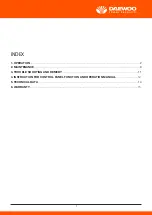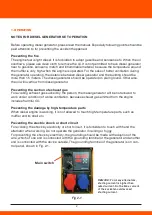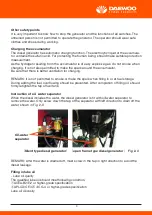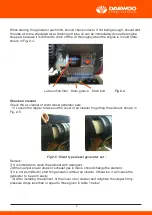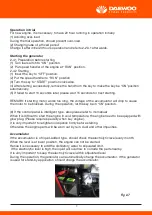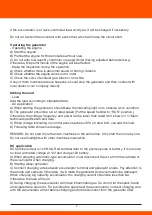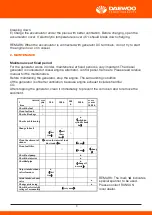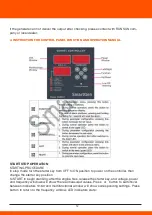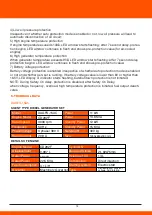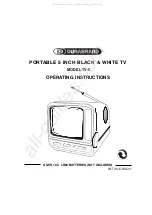
3
1. OPERATION
NOTES FOR DIESEL GENERATOR SET OPERATION
Before operating diesel generator, please read the manual. Especially following points should be
paid attention to for preventing the accident happened.
Preventing the fire
The engine fuel is light diesel. It is forbidden to adopt gasoline and kerosene etc. When the oil
overflows, please use clean cloth to remove the oil. It is not permitted to have diesel generator
near to gasoline, kerosene, match and inflammable material, because the temperature around
the muffler is very high when the engine is operated. For the sake of better ventilation during
the generator operation, the distance between diesel generator and the building should be
more than 1.5 meters. The diesel generator should be operated on plain ground. Otherwise,
the oil will overflow from diesel generator.
Preventing the suction of exhaust gas
For avoiding exhaust gas sucked by the person, the diesel generator will be not allowed to
work under condition of worse ventilation, because exhaust gas emitted from the engine
includes harmful CO.
Preventing the damage by high-temperature parts
When diesel engine is working, it is not allowed to touch high-temperature parts, such as
muffler and its shell etc.
Preventing the electric shock or short circuit
For avoiding the shock by electricity or short circuit, it is forbidden to touch with hand the
alternator when working. Do not operate the generator in raining or foggy.
For preventing the shock by electricity, the grounding should be made with adoption of the
wire, which of one end is connected with the grounding terminal of the generator and another
end is connected with the device outside. The grounding terminal of the generator is on con-
trol panel, shown in Fig. 2-1.
Other safety points
It is very important to know how to stop the generator and the functions of all switches. The
untrained person is not permitted to operate the generator. The operator should wear safe
clothes and shoes during working.
Charging the accumulator
The diesel generator has automatic charging function. The electrolytic liquid of the accumula-
tor contains the sulfuric acid. For protecting the human being, should make suitable protection
measurement.
As the hydrogen resulting from the accumulator is of easy explosive gas, do not smoke when
charging. It is not also permitted to make the spark around the accumulator.
Be sure that there is better ventilation for charging.
REMARK: It is not permitted to smoke or make the spark when filling in or at fuel storage.
During adding the fuel, overflowing should be prevented. After completion of filling oil, should
firmly retighten the tap of fuel tank.
Instruction of oil- water separator
When the diesel includes the water, the diesel generator is fit with oil/water separator to
remove the water. Only screw down the tap of the separator with left direction to drain off the
water, shown in Fig. 2-3
REMARK: After the water is drained off, must screw in the tap in right direction to avoid the
diesel leakage.
Filling in lube oil
- Lube oil quality
The qualified lube oil should meet following condition.
①
ACEA-B2/E2 or higher-grade specification
②
API-CD/CE/CF-4/CG-4 or higher-grade specification
Lube oil viscosity
Select lube oil viscosity based on ambient temperature when starting at cold temperature.
It is very important to select the applicable engine oil for keep up the performance and life of
the generating set. If inferior engine oil is used, or if your engine oil is not replaced periodically,
the risk of piston seizure, piston ring sticking and accelerated wear of the cylinder liner, bea-
ring and other moving components increases significantly. So the generating set life will be
shortened. We recommend CC/CD oil classified by API. Choose the applicable viscosity oil
according to the local ambient temperature.
Interval for changing lube oil
When use inferior engine oil, the interval for changing lube oil will be shortened to every 150
hours running.
Lube oil level of engine
(
Silent type diesel generator
)
(
open frame type diesel generator
)
Oil-water
separator
Fig 2-3


